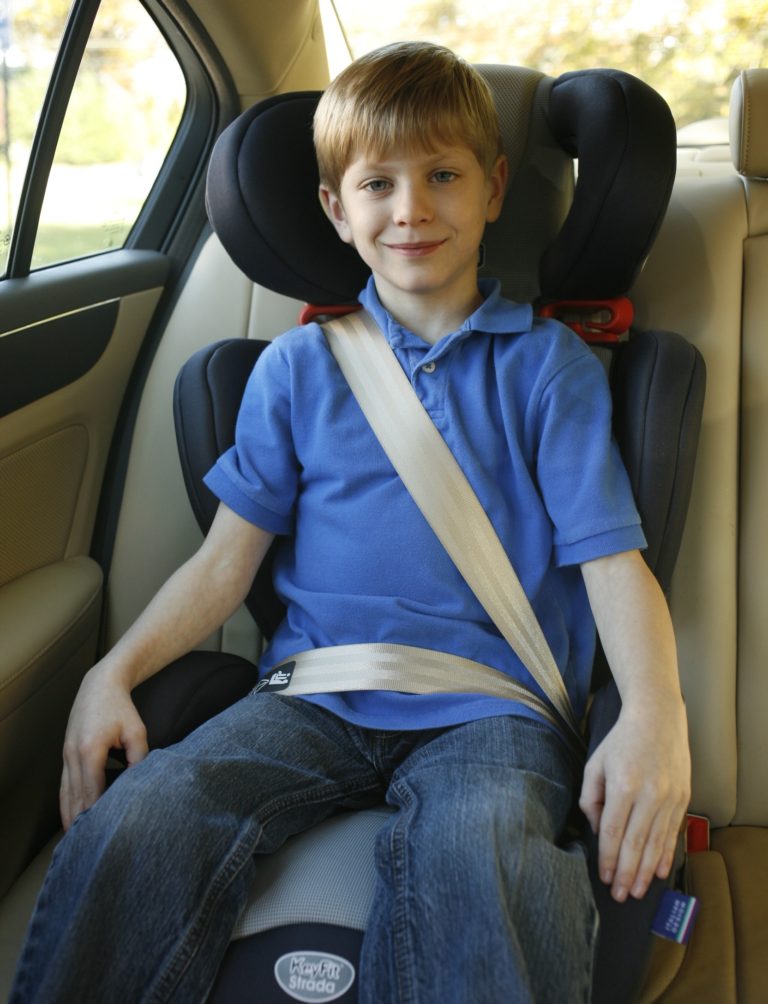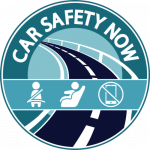Booster Seats
Stage 3: Booster Seats until the Seat Belt Fits (approx. 4’9″)
Use car seats with harnesses to the top weight or height limits of the harnesses. Once children outgrow harnesses, use a booster seat in the back seat until the seat belt fits properly (use the safety belt fit test to be sure). A booster seat is often needed until a child is around 4 feet 9 inches tall. Your child may be about 12 years old before he/she is ready for a seat belt.
Watch our video to learn why booster seat use is so important for older children
Booster Seat Safety Tips

- Once children outgrow weight and height limits for traditional safety seats, they should travel in belt-positioning booster seats in the back seat until the vehicle seat belt fits properly, typically when they have reached 4’9″ tall and are between 8 and 12 years of age.
- Using a booster seat with a lap/shoulder belt instead of just a safety belt reduces injury by 45% for 4 to 8-year-olds.
- Graduation out of a booster seat is best determined by safety belt fit test, and many small-frame youngsters will require a booster seat long past the minimum age required by law.
- Booster seats raise children higher, so the safety belt fits over strong, bony parts of the body (e.g., hips and chest). Seat belts fit poorly on children’s bodies, increasing injury to soft and vulnerable parts of the body (e.g., stomach and neck).
Booster seat weight and height ranges
vary greatly. Read labels to determine the correct seat for age, weight, and height.
High-back and no-back boosters
Both are available. High-back boosters are useful in vehicles that do not have head restraints or have low seat backs. Backless boosters are usually less expensive and are easier to move from vehicle to vehicle. Backless boosters can be safely used in vehicles with head rests and high seat backs.
Many high-back boosters
are actually combination seats. They come with harnesses that can be used for smaller children and can then be removed for older children.
READ the instruction manual
AND the safety belt/seat section in your vehicle manual.
Children should always
ride in the back seat until age 13.
Lap and shoulder belts
are required with booster seats. If you have only lap belts in your car, there are some alternatives, including having shoulder belts installed in your vehicle, using a safety seat with a harness system that goes up to high weights (e.g., 85 lbs.), or using a travel vest (see a list of some available vests).
Safety Restraint Misuses
The primary cause of injuries from misuse of booster seats is the misrouting of the safety belt. Common misuses of booster seats and safety belts include:
- Shoulder belts being placed behind the child’s back, under the child’s arm, or over the booster seat arm rest
- Shoulder belts not being placed at mid-shoulder position
- Shoulder belts being positioned too loosely
- http://www.healthychildren.org/
English/safety-prevention/on-the-go/pages/default.aspx - https://www.chkd.org/Patients-and-Families/Health-Library/Way-to-Grow/Car-Seat-Safety/
- chop.edu/service/car-seat-safety-for-kids
- https://www.safekids.org/ultimate-car-seat-guide/
- https://www.nhtsa.gov/parents-and-caregivers



